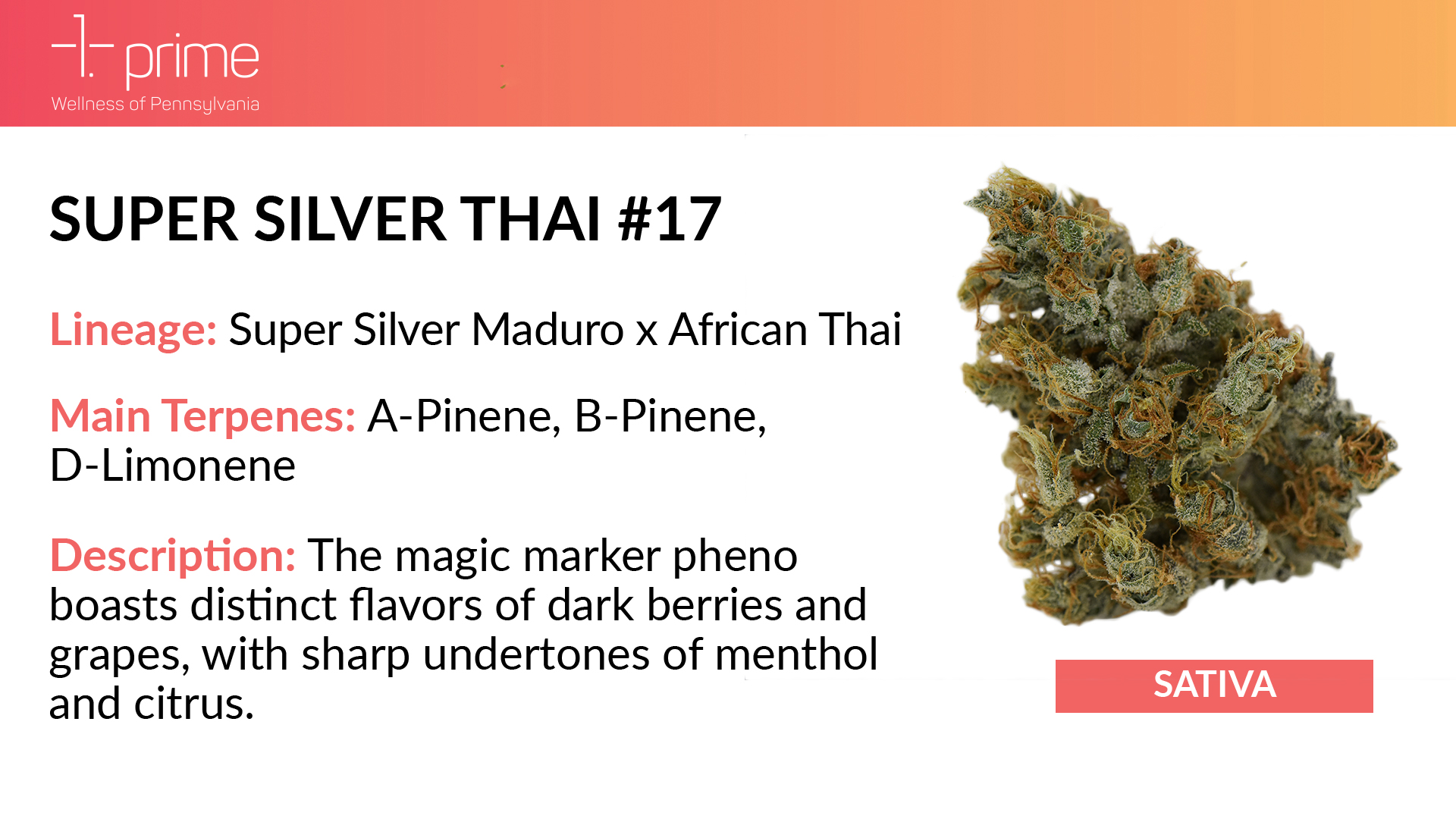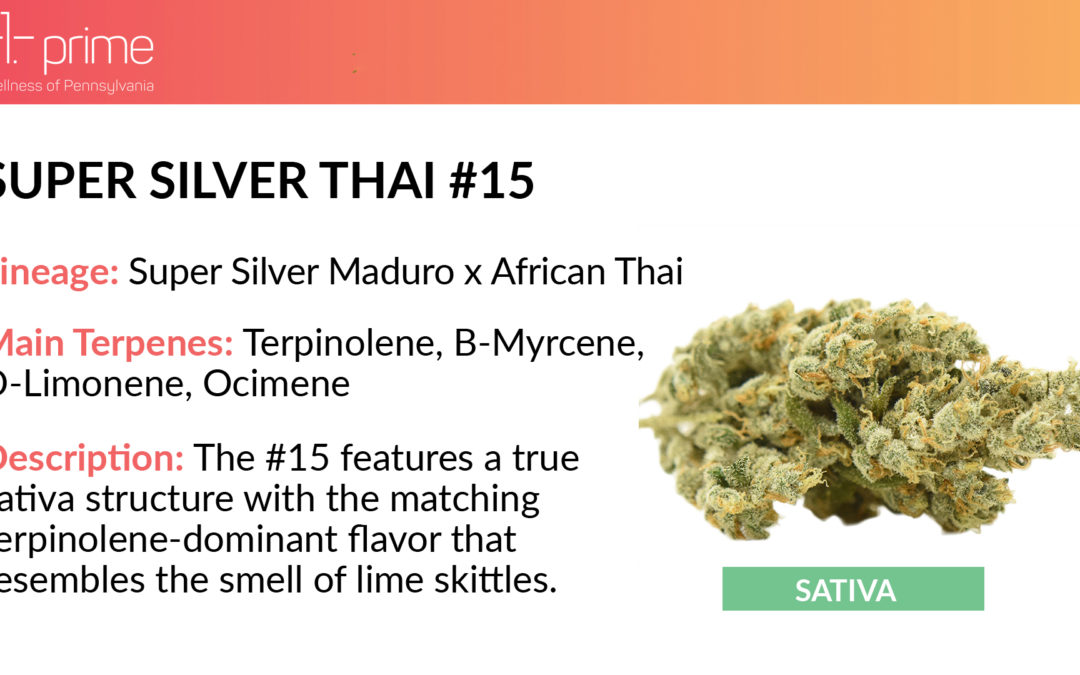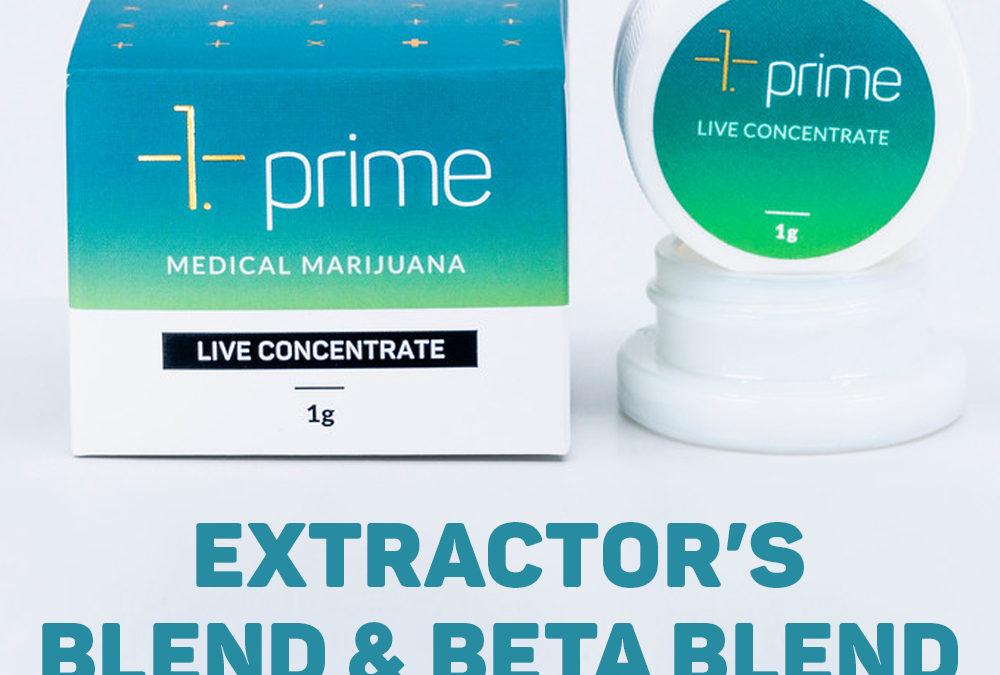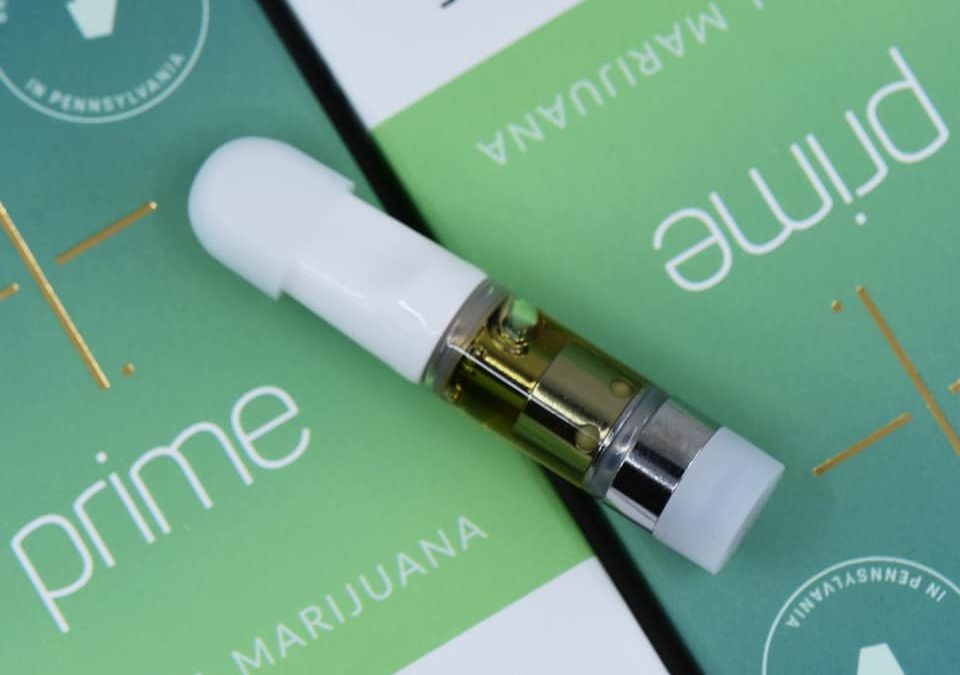Our growers’ expertise and passion for creating premium-quality therapeutics shines through in every batch of prime products we supply to Commonwealth dispensaries. But have you ever wanted to learn more about the innovative processes and product development happening in our grow rooms?
Our new “Behind the Strains” newsletter has got you covered. This series will walk you through the expert combination of passion and science that drives our in-house breeding program. We’ll also share downloadable PDFs that you can use to learn more about the featured strains’ profiles— outlining descriptive traits, terpenes, and lineage.
In this edition, we’ll be giving you a prime insider’s look at the expert pheno-hunting process behind the diverse expressions of Super Silver Thai— a standout offering in our exclusive lineup of in-house bred genetics.
Planting the Seed: The Super Silver Thai cultivar is a cross between Super Silver Maduro and African Thai, sativa strains that boast strong trichome coverage. True to their Super Silver Maduro lineage, both Super Silver Thai phenos display narrow leaf structures that are covered in trichomes— the glands that are responsible for the medical marijuana plant’s resin production. Super Silver Thai stems from coveted Black Maduro and Super Silver Haze genetics, a testament to the expert curation of our genetic library. According to John Watson, our Director of Production, “Super Silver Maduro was a production cultivar for us in the early days of prime.” Watson says that the intention behind crossing Super Silver Maduro and African Thai genetics was to create new cultivars that “carried much of the same cannabinoid and terpene potency of the African Thai, but maintained some of the same qualities of the female being pollinated.”
Taking Root: Once our growers planted a host of seeds crossed from the Super Silver Maduro and African Thai parents, the pheno hunt was on. Our cultivators then separated the developing male plants from the females. These female plants were assigned a unique pheno number that allows our team to assess their characteristics throughout development. While closely monitoring and logging the unique development of these individual plants, it was clear to our professionals which genetic expressions were prime’d for subsequent cloning, refining, and testing. After much meticulous work, a duo of Super Silver Thai phenotypes rose above the rest— our lime Skittle and Magic Marker phenos.
Watson notes that these phenotypes “have many similarities structurally but have very unique flavor profiles all their own.” He describes the Super Silver Thai #15 as “a terpinolene powerhouse,” and says the Super Silver Thai #17 ”smells like fresh berries and haze on harvest days.” Super Silver Thai #15 has been dubbed our Lime Skittle pheno. In line with its secondary name, the #15 flower boasts pungent notes of sweet lime, as well as pine and haze. Its structure displays distinctive foxtailing— a genetic trait that is common among indoor-grown sativas which makes its buds appear spiky. Our Magic Marker pheno, the #17 cultivar, displays a similar haze structure to buds of the Super Silver Maduro “mother”— a term which describes the genetic source of the clones in our flower room. Super Silver Thai #17 boasts signature flavors of dark berries and grapes, with sharp undertones of menthol and citrus.

Budding Medical Potential: This cross features some of the most distinctive terpene profiles of any strain in our genetic library. The Lime Skittle pheno has tested for notable amounts of terpinolene, b-myrcene, d-limonene, and ocimene. Although less common among popularly-bred strains today, researchers are studying terpinolene for its potential to combat cancer cell progression. Ocimene, also found in orchids, has a floral-leaning sweetness and may potentially provide anti-inflammatory benefits for arthritis and related conditions.
The Magic Marker pheno contains unique amounts of both a-pinene and b-pinene. What’s the difference between these two terpenes? The “a” and “b” indicate differences in their molecular build— alpha and beta structures— but they share the same possible medical benefits. Both forms of the woodsy terpene pinene have been studied for their potential to alleviate inflammation.
Patients should check with their dispensary pharmacist on whether these prime cultivars might work for their unique medical needs.


